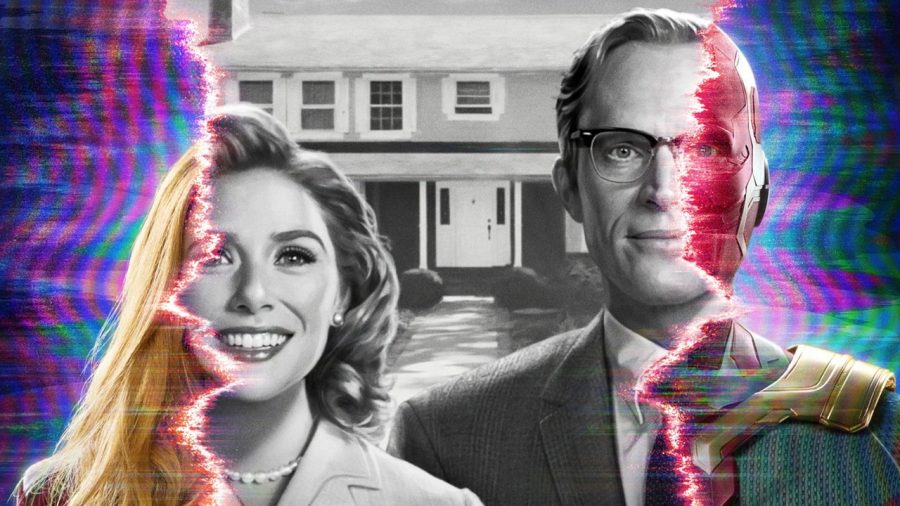Marvel’s WandaVision mocks conformity, social norms
In Marvel’s, “WandaVision,” the character’s lives revolve around a 1950s-style setting.
January 19, 2021
Marvel Studios, a peddler of big-screen, smash-hit superhero movies, has released its first scripted series on Disney Plus.
In WandaVision, Wanda (Elizabeth Olsen) and Vision (Paul Bettany) navigate the drama and tension of a suburban, 1950s-style existence. Inexplicably dropped into an old-school sitcom complete with canned laughter and a silly title sequence, the couple struggles to fit into a socially rigid community while grappling with the lingering suspicion that nothing is as it seems.
Throughout the first two episodes, Wanda adheres to the lofty standards of the mid-century housewife, cooking to impress Vision’s boss and kissing up to an elitist neighbor in desperate attempts to fit in. Vision works a mundane job at a meaningless corporation, unsure of the purpose behind his work.
Their experiences offer a satirical mockery of strict social norms and a dangerously contorted view of the American dream: To be accepted by their neighbors, Wanda and Vision must conceal their superhuman powers and mysterious past, forfeiting any chance to do something befitting of their talents.
Despite occasional hints that their surroundings are unreal, Wanda and Vision remain unaware of their past experiences, including their tenure with the Avengers.
As they struggle to realize their true identities and survive the conformist snares of suburbia, the superpowered couple will continue to throw American culture into harsh and hilarious mockery, offering a bit more to chew on than an average superhero romp.




